
Like most people, we love ab workouts at Tom’s Guide, but let's forget them for one moment — this five-move compound exercise workout torches core muscles and targets muscle groups all over.
Ab workouts are great at strengthening the muscle groups that make up your core musculature, but you could also build core strength and hit various other muscles using compound exercises. If you’re unfamiliar with the term, you won’t be with the moves — a compound move simply refers to a multi-joint, multi-muscle exercise like squats and push-ups and can be done with or without weights at home or in your gym.
Adding compound exercises to your strength regime hits muscles more efficiently so that you get more bang for your buck. Grab a pair of dumbbells — we recommend the best adjustable dumbbells for home workouts — and read on for our 5-move compound exercise workout to build strength and muscle.
How do I start core strengthening?
The best ab workouts are great supplements for any training regime, but strong core muscles are more than aesthetically pleasing. They support better posture and movement, protect the spine, mobilize your trunk and help you lift heavier and run faster. Although the rectus abdominis (those sizzling six-pack muscles) are the most sought-after in the gym, they’re not the only ones you should focus on.
If your goal this year is to achieve stronger, more defined core muscles, we recommend expanding your ab exercise repertoire to include compound moves. You could still target muscles like your glutes (yep, they’re core muscles), internal and external obliques, transverse abdominis (a deep belt of core muscles that hug your trunk) and erector spinae (muscles that support your spine) — to name a few.

You don’t need to spend hours in the gym isolating those muscles to get results. Compound exercises tick the boxes for efficiency and effectiveness.
That said, a defined midsection requires some work — diet, hormones, stress and sleep should be addressed if the goal is to lose fat and build definition. Here’s how to calculate your body fat percentage and why it matters.
15-minute 5-move compound exercise workout
This five-move compound exercise workout can be scaled to any ability and workout length. We recommend 15 minutes, but you can increase or decrease it depending on your goals and experience.
The routine combines five dumbbell exercises into a complex — a flow of moves back-to-back. That means transitioning from one to the next without rest. Try to pick a medium to heavy set of dumbbells, or start lighter until you feel comfortable with each move.
The workout is an AMRAP, meaning as many rounds as possible. Complete 2 reps per exercise, then add 2 reps each round. Take a brief rest between rounds.
1. Renegade rows
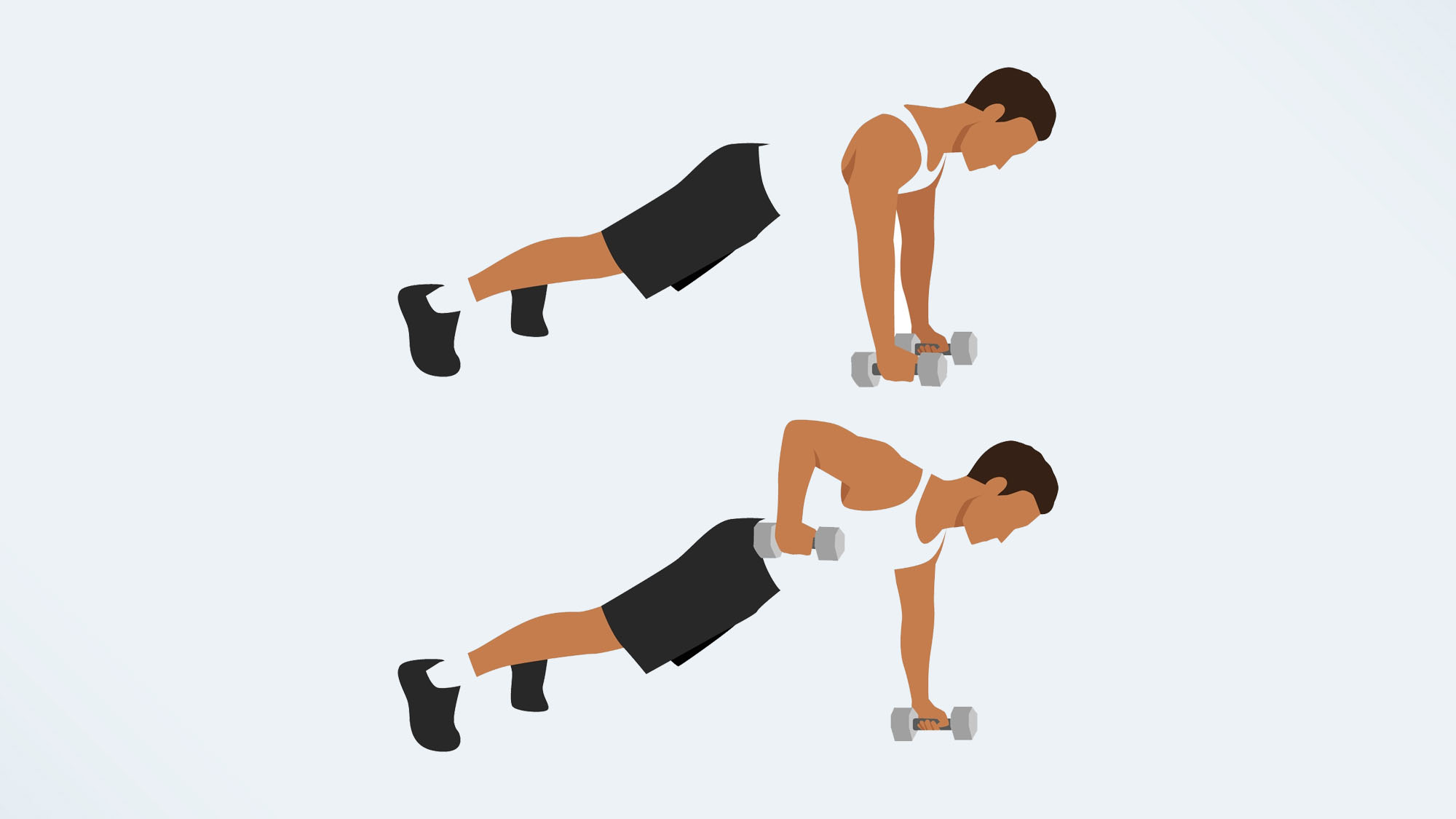
Renegade rows target deep core stabilizer muscles and the upper body, including your back and biceps. One fitness writer did 40 renegade rows a day for a week — here’s what happened.
How:
- Start in a plank position with a dumbbell in each hand
- Engage your core, then row one arm back until your elbow is slightly higher than your torso, then slowly lower it back down to the ground and switch sides
- Keep your hips square without twisting them and in line with your shoulders
- Drop your knees down if you prefer.
2. American swings
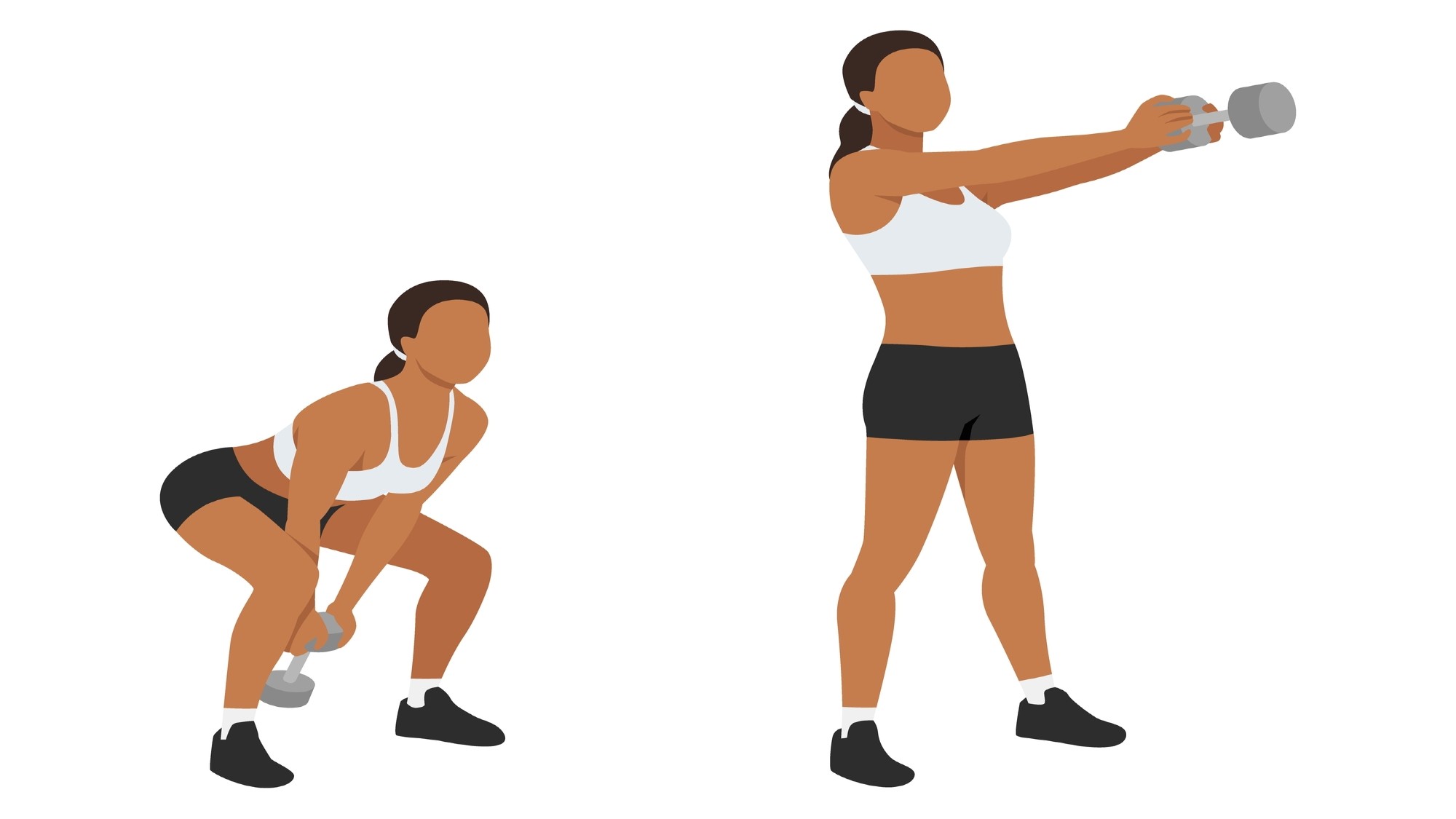
From your renegade row position, jump both feet to the outside of your hands, then lift both dumbbells in front of you. Here’s how to do a kettlebell swing. American swings mean swinging the weight higher, above your head.
How:
- Start with feet shoulder-width apart, grasping both dumbbells close together
- Softly bend both knees, engage your core and send your hips backward. Swing the weights back between your legs
- As you swing upwards, engage your glutes and your abs and keep your arms outstretched
- Aim to raise both weights above your head. Squeeze your glutes and snap your hips at the top of the movement
- Let the dumbbells travel back down, and swing them between your legs again for your next rep.
3. Bentover row
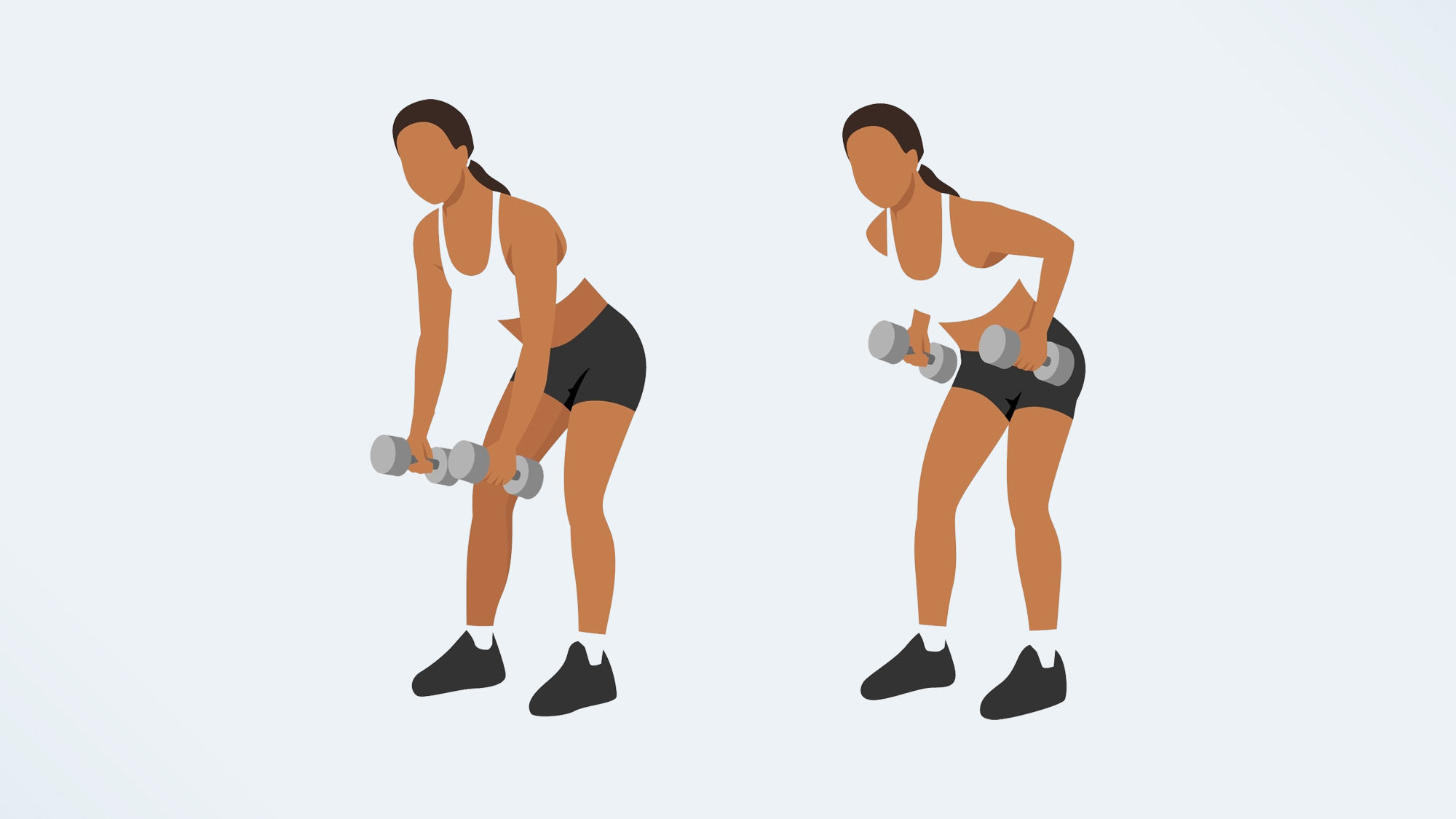
From your swing, move into your bentover row. Learn how to do a dumbbell row here.
How:
- Keep your feet shoulder-width or hip-width apart, slightly bend your knees and hinge forward at your hips. Ensure your back stays flat
- Engage your core and keep a neutral grip on the dumbbells (palms facing each other)
- Row both dumbbells back toward your hips, arms close to your ribs, then lower the weights back to the starting position.
4. Dumbbell burpees
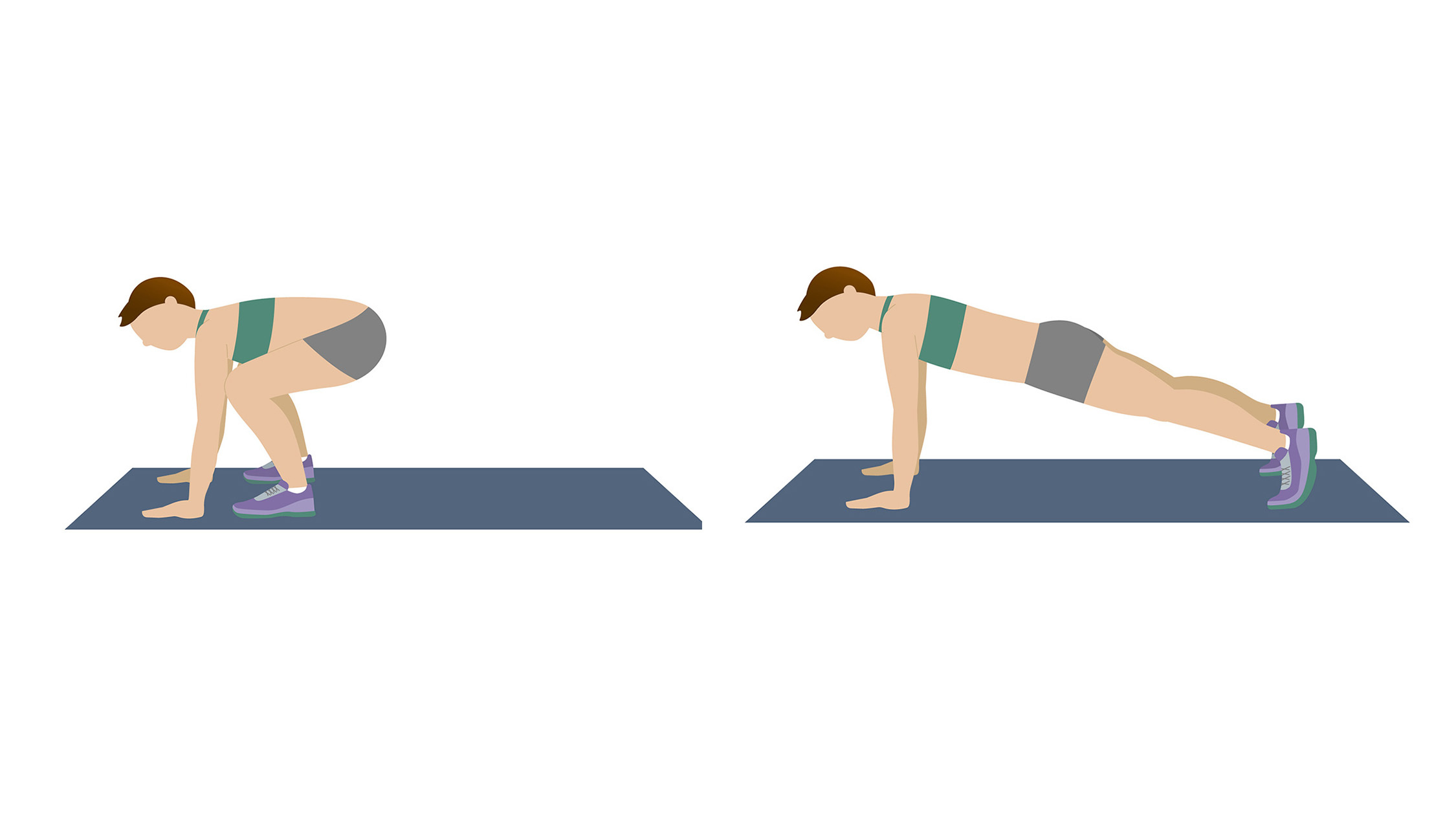
From standing, grip both dumbbells by your sides and move into the burpee. Here’s how to do a burpee.
How:
- Keeping a firm grip on both dumbbells, place both weights down on the ground in front of you
- Engage your core, then jump both feet back into a high plank position
- Lower your chest to the floor between the dumbbells into a bodyweight push-up
- Explosively push the ground away and straighten your arms, lifting your hips and chest together
- Jump both feet forward just behind your hands, lift your chest and stand up while holding both dumbbells. Keep your back flat and core engaged as if performing a deadlift.
5. Thrusters
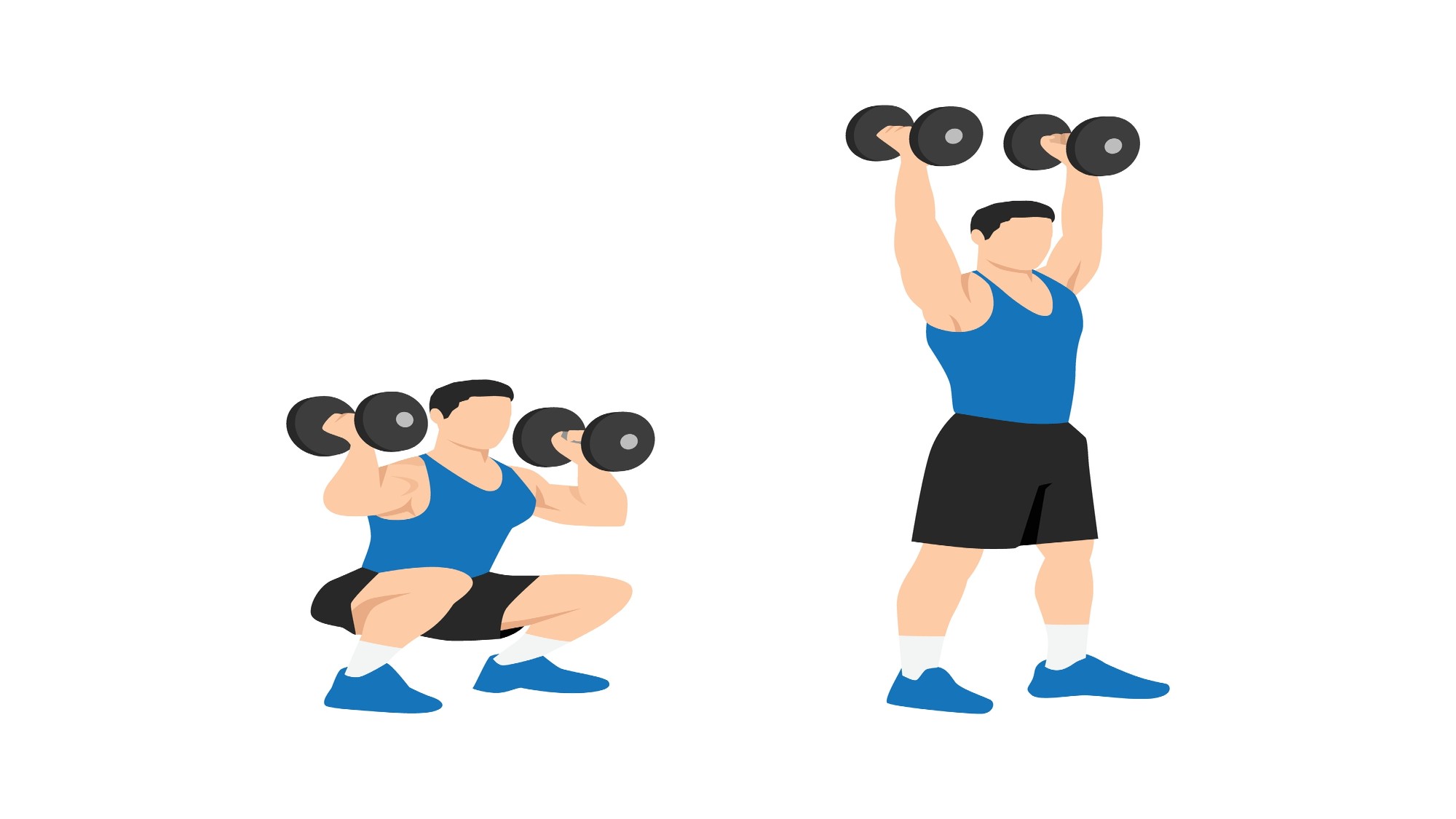
From standing, begin thrusters.
How:
- Stand with feet shoulder-width apart, dumbbells racked onto your shoulders and elbows lifted
- Perform a squat, keeping your chest proud, back flat and elbows pointed forward
- Drive through your heels to stand. As you stand up, press both dumbbells into an overhead press. Lock both arms out at the top, biceps behind ears
- Lower the dumbbells to your shoulders with control as you squat back down.
If you haven’t seen a complex before, this five-move barbell complex workout provides an explainer for beginners learning how to move between exercises with ‘flow.’ Try not to break between moves, simply transitioning from one to the next and resting between rounds. Accumulate max reps and rounds for the given time cap.







